Why does my meal prep taste bad after a few days? If you’ve found yourself asking that question after opening yet another container of bland, rubbery leftovers, you’re not alone. This article dives deep into the real reasons your carefully prepped meals lose their flavor and what you can do about it. From ingredient breakdown to storage mistakes and even psychological fatigue, we’ll explore every angle so your next round of meal prep doesn’t end in disappointment.
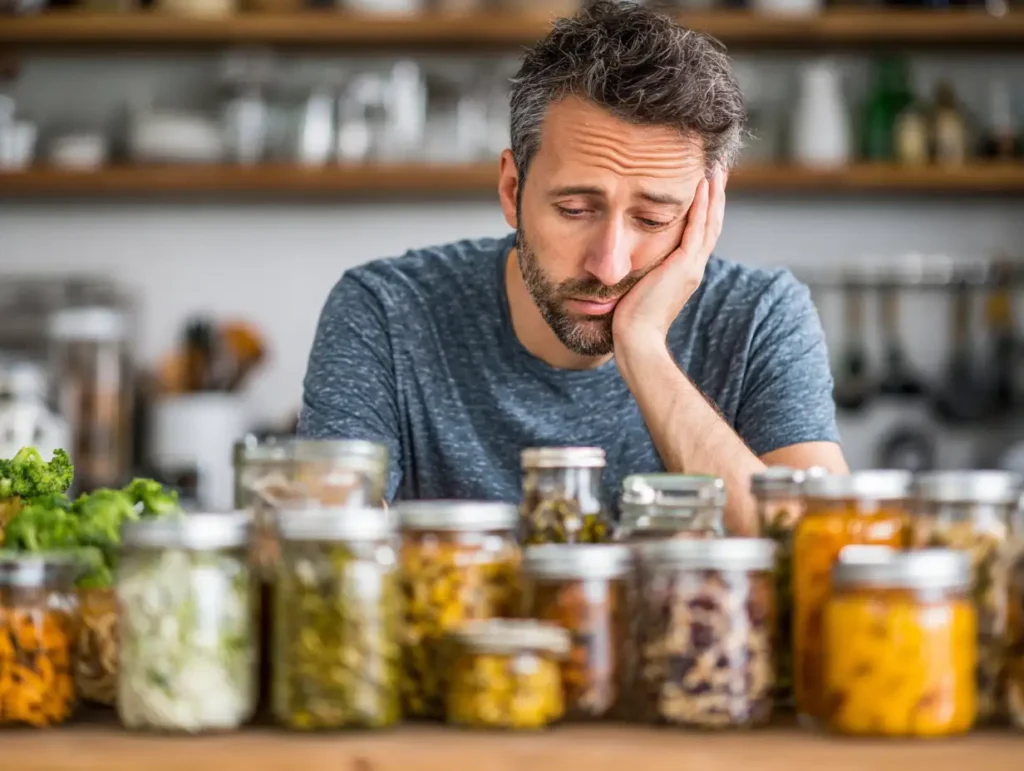
I’ve been there. I used to spend my Sundays cooking chicken, rice, and roasted veggies for the week only to end up tossing half of it by Wednesday. It wasn’t just the texture going off. It was the weird aftertaste, the soggy vegetables, the way the seasoning seemed to vanish overnight. I questioned whether meal prep was even worth it. But after testing different techniques, containers, and ingredient combinations, I finally started to understand why my meal prep food tasted bad and how small changes made a big difference.
Jump To
Why does my meal prep taste bad
Meal prep is supposed to make life easier not disappoint your taste buds. Yet many people find that even well-seasoned meals lose their appeal just a couple of days after cooking. To fix that, we need to understand what’s really happening to the food between Sunday prep and Thursday lunch.
This section breaks down the science behind why meal prep doesn’t taste good after a few days, starting with how flavor works, what goes wrong during storage, and why some foods (like chicken) are particularly prone to tasting off.
The Science of Food Flavor and Freshness
Flavor is more than just seasoning it’s a complex interaction between aroma, taste, and texture. According to the Monell Chemical Senses Center, up to 80% of what we perceive as flavor actually comes from smell. When food is freshly cooked, volatile aroma compounds are released and interact with your olfactory receptors, creating a full flavor experience.
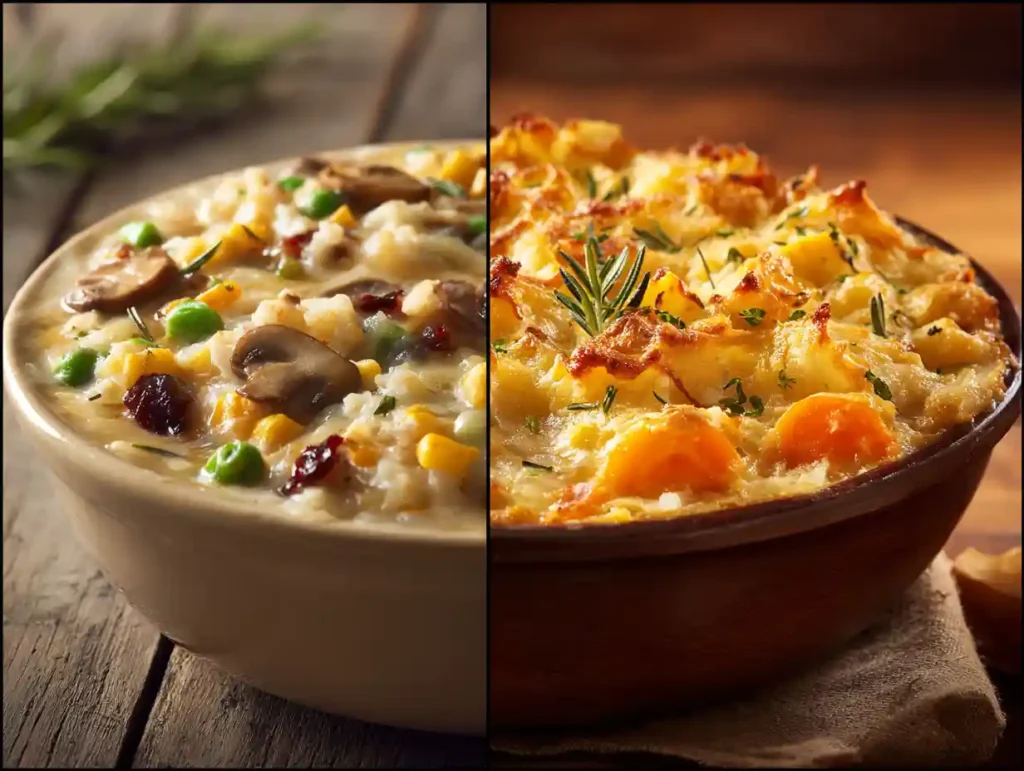
But as food sits, especially in the fridge, those compounds degrade. Herbs and spices lose potency. Fats oxidize. Proteins break down. What you’re left with is a muted version of what once tasted great a key reason meal prep food tastes bad after a few days. Without active aroma compounds, even perfectly safe food can feel dull, stale, or flat.
What Happens in the Fridge?
Refrigeration slows bacterial growth, but it doesn’t preserve food quality forever.
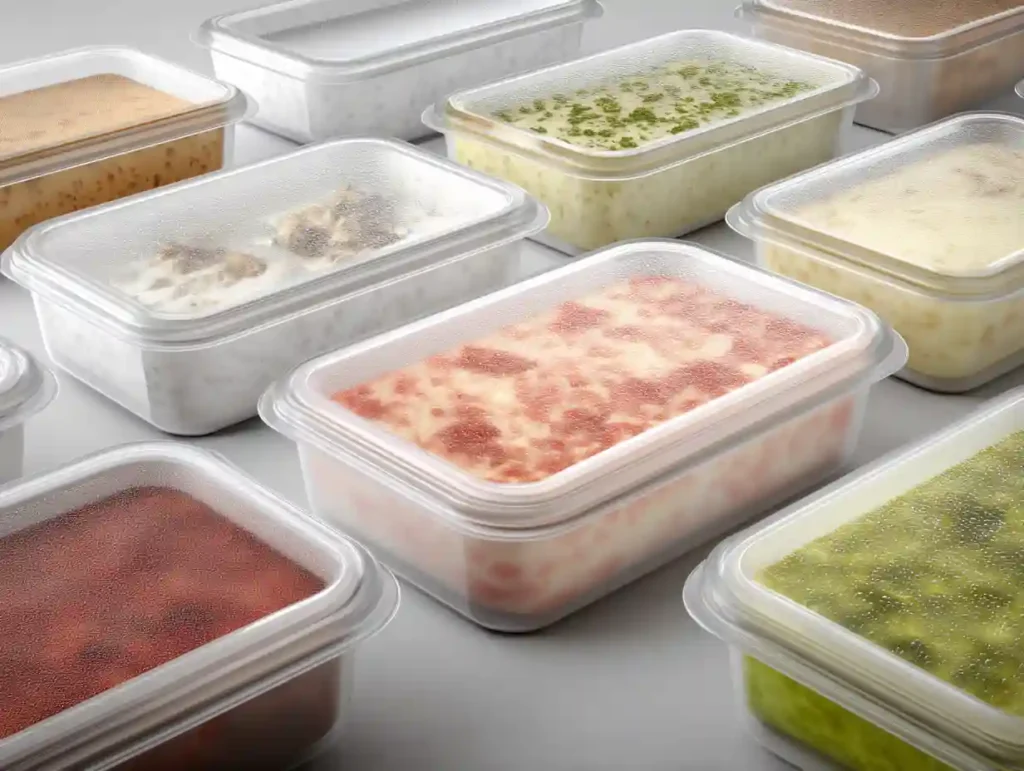
In fact, several subtle (and not-so-subtle) changes start as soon as the meal cools:
- Moisture loss: Even in sealed containers, evaporation causes cooked food, especially proteins and grains to dry out. This makes meats chewy and rice crumbly.
- Oxidation: Exposure to oxygen, even in airtight containers, causes fats to go rancid over time. This is especially noticeable in oils, nuts, and fatty cuts of meat.
- Texture breakdown: Enzymes in vegetables and proteins continue to work after cooking. This can make roasted veggies mushy and chicken rubbery.
These processes aren’t dangerous, but they affect sensory quality. That’s why meal prep doesn’t taste good after sitting in the fridge for too long your food is chemically changing every hour it’s stored.
Why Does Leftover Chicken Always Taste Bad?
Chicken is one of the most meal-prepped proteins, and also one of the most complained-about. Many people say meal prep chicken tastes bad after just 1–2 days. The culprit? A mix of chemical reactions and reheating problems.
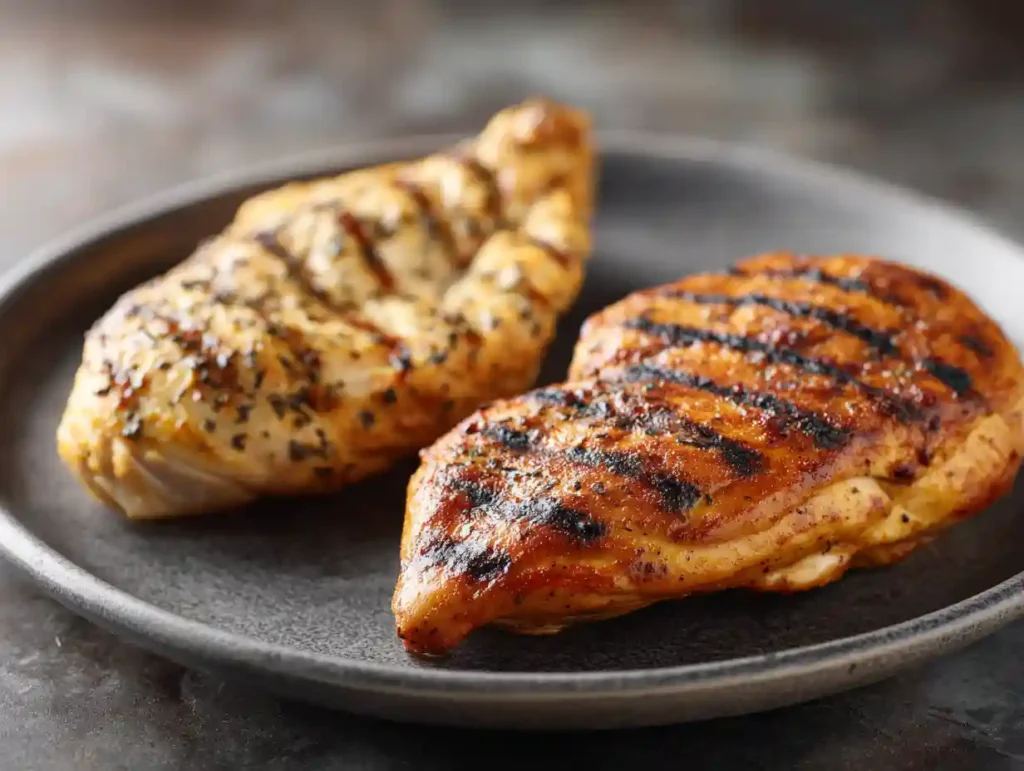
Cooked chicken contains sulfur-containing amino acids. When reheated (especially in a microwave), these amino acids can release hydrogen sulfide, the same compound that smells like rotten eggs. That’s why leftover chicken often smells or tastes “off”, even if it’s perfectly safe to eat.
Other issues include:
- Protein hardening: Reheated chicken becomes tougher as muscle fibers contract and expel moisture.
- Flavor flattening: The initial seasoning may not penetrate deeply, making the flavor fade faster during storage.
To minimize this, many chefs recommend prepping chicken in flavorful sauces (like tomato-based or coconut curry) or shredding it ahead of time and reheating gently on the stovetop instead of the microwave. These techniques preserve moisture and mask any off-flavors especially helpful for people who find meal prep food tastes bad even when stored properly.
Common Mistakes That Make Meal Prep Taste Worse
Even when you follow a recipe to the letter, your meal prep can still fall flat after a couple of days. That’s because flavor loss isn’t always about time it’s often about technique. Many of the most common issues that cause meal prep food to taste bad are completely preventable. From overcooking to poor container choices, these mistakes silently sabotage your meals before they even hit the fridge.
Overcooking or Overseasoning in Advance
Cooking meals for storage isn’t the same as cooking for immediate serving. One of the biggest mistakes in meal prep is overcooking proteins or vegetables, thinking it’ll make them safer or “hold up” better. In reality, foods like chicken breast, broccoli, and rice continue to cook slightly as they cool. Starting them at a higher doneness level means they’ll taste dry or mushy when reheated.
Another issue is overseasoning. Spices like cumin, paprika, and chili powder intensify over time, especially in airtight containers. Salt also continues to pull moisture from ingredients, leading to watery or overly salty dishes later in the week. If your meal prep doesn’t taste good, try under-seasoning slightly and adjusting during reheating instead.
Poor Storage Techniques and Containers
Meal prep fails often begin with the wrong container. If you’re using stained plastic containers with loose-fitting lids, you’re accelerating flavor decay. The USDA recommends using airtight glass or BPA-free plastic containers to maintain food quality and reduce oxidation.
Key mistakes to avoid:
- Mixing wet and dry ingredients (e.g., sauces and grains), which leads to sogginess.
- Stacking meals before they’re fully cooled, which traps steam and encourages moisture buildup.
- Storing proteins with acidic components (like lemon juice or vinegar) for too long, which can alter taste and texture.
Investing in sectioned containers, vacuum-sealed options, or silicone bags can dramatically improve how your meal prep tastes after a few days in the fridge.
Reheating Errors That Ruin Texture and Taste
Microwaving leftovers may be quick, but it’s rarely gentle. One of the biggest reasons meal prep tastes bad after a few days is the way it’s reheated not the meal itself. Common problems include:
- Uneven heating, which causes some parts to dry out while others stay cold.
- Reheating at too high a temperature, which breaks down proteins and oils, releasing off-flavors.
- Using the wrong method for the food type: e.g., microwaving roasted vegetables instead of reheating them in the oven or air fryer.
Use low power settings for microwaving, cover food with a damp paper towel, or opt for stovetop reheating to preserve texture and flavor. For grains or pasta, adding a splash of broth or water before reheating helps revive softness without turning the dish mushy.
Using Ingredients That Don’t Reheat Well
Not all foods are meal prep-friendly. Some ingredients degrade in flavor, texture, or safety once stored and reheated. Common offenders include:
- Fried foods (become soggy and greasy)
- Egg-based sauces (can separate or curdle)
- Leafy greens (wilt or develop bitterness)
- Delicate fish (becomes dry and fishier-tasting)
- Avocado (oxidizes quickly)
Instead, build your meals with reheating in mind. Sturdier ingredients like quinoa, roasted root vegetables, chicken thighs, and bean-based stews generally hold up better. If you consistently feel like your meal prep doesn’t taste good, consider switching to dishes that are proven to age well such as chili, curry, or baked casseroles.
Can Meal Prep Ever Taste as Good as Fresh?
If you’ve ever wondered whether it’s even possible for meal prep to taste as good as fresh, you’re asking a valid question. The truth is: while no reheated dish will fully replicate a just-cooked meal in flavor and texture, smart choices in ingredients, prep methods, and storage can get you surprisingly close.
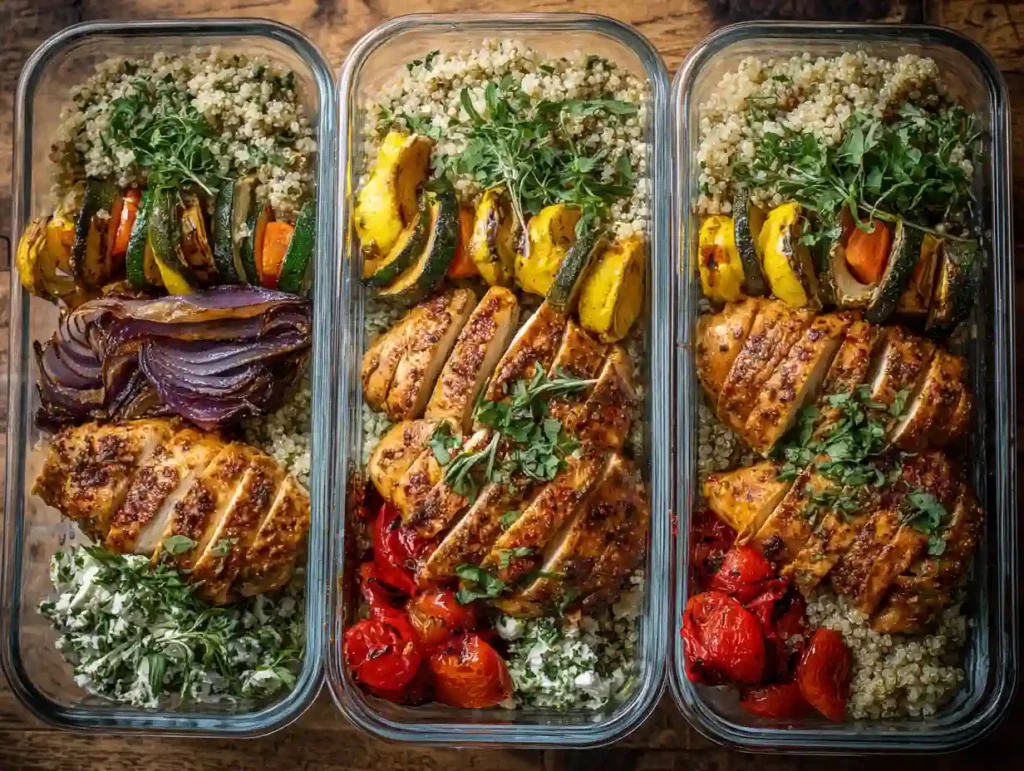
This section explores which foods work best for meal prep, what techniques help preserve flavor, and how to finally eliminate that dreaded “leftover” taste.
Foods That Hold Up Well vs. Poorly Over Time
Not all ingredients are built for storage. One reason meal prep food tastes bad after a few days is simply because the wrong ingredients were used in the first place.
Best ingredients for meal prep:
- Grains like quinoa, farro, and brown rice, they hold texture and absorb flavor over time.
- Root vegetables like sweet potatoes, carrots, and beets, they roast well and reheat without turning mushy.
- Sturdy greens like kale or cabbage (when used in cooked dishes), unlike spinach, they don’t disintegrate.
- Chicken thighs and pulled beef, they retain moisture better than lean cuts like chicken breast.
Foods that perform poorly:
- Crispy foods like breaded chicken or fries, turn soggy.
- Delicate proteins like fish, dry out and become overly fishy.
- Creamy sauces made with eggs or dairy, tend to separate or curdle.
Knowing which foods behave well after refrigeration can reduce the chance that your meal prep tastes bad after a few days or sooner.
Flavor-Boosting Strategies for Better Tasting Prep
Flavor doesn’t just come from spices, it comes from layering, timing, and balance. To make your prepped meals more satisfying later in the week, consider:
- Marinate before cooking: Letting proteins sit in lemon juice, vinegar, or soy sauce-based marinades for a few hours boosts depth and moisture retention.
- Use compound sauces: Sauces like chimichurri, curry, or harissa intensify flavor and reheat beautifully.
- Add fresh components at the last minute: Keeping elements like herbs, chopped onions, or citrus zest separate and adding them after reheating instantly brightens up the dish.
- Incorporate umami: Ingredients like miso, sun-dried tomatoes, parmesan, or mushrooms add long-lasting flavor that resists fading.
Many professional meal prep services and high-performance athletes use these strategies to ensure their meals don’t just last they taste great.
How to Avoid That “Reheated Taste”
The so-called “leftover flavor” is often a result of both chemical breakdown and poor reheating technique. Here’s how to minimize it:
- Use the right appliance: Instead of microwaving everything, try reheating meals like pasta or stir-fry on the stove. An air fryer can restore crispiness to roasted items.
- Add moisture: A splash of broth, olive oil, or a pat of butter during reheating helps revive texture and prevents dryness.
- Use fresh garnishes: Toss on a handful of chopped scallions, shredded cheese, or arugula after heating to simulate a just-cooked feel.
Small changes like these can dramatically improve how your meal prep tastes after a few days, even if you’re not eating it immediately after cooking.
Freezing vs. Refrigerating: What Tastes Better Later?
When flavor longevity matters more than convenience, freezing is often the better option. While refrigeration slows spoilage, freezing halts most enzymatic and microbial activity entirely keeping meals tasting more like they did when they were first cooked.
Refrigerate when:
- You plan to eat the meal within 2–3 days.
- The ingredients include raw vegetables or dairy, which can degrade in the freezer.
Freeze when:
- You’re prepping 5–7 days ahead or in bulk.
- Meals are high in moisture and fat like soups, stews, casseroles, or chilis.
Using vacuum-sealed bags or silicone storage containers reduces freezer burn and oxidation, helping preserve both flavor and texture. If your meal prep doesn’t taste good, switching to a freeze-first system might be the key.
How long does meal prep last before it loses taste
Most meals begin to lose noticeable flavor after 3–4 days in the fridge, even if they’re still safe to eat. Factors like moisture loss, oxidation, and ingredient fatigue contribute to flavor decline. To keep meals tasting fresh longer, use airtight containers, cool them properly, and freeze portions you won’t eat within 3 days.
When the Problem Isn’t the Food
Sometimes, your meal prep tastes bad after a few days not because of what’s in the container, but because of what’s happening in your brain. Even when the ingredients are fresh and the storage is spot-on, meals can start to feel unappetizing over time due to psychological and sensory factors.

Understanding these non-culinary reasons is key to building a routine that doesn’t just nourish your body but keeps you excited to eat what you’ve prepped.
Psychological Factors: Why Meal-Prepping Feels Gross After a Few Days
Eating the same meal multiple times in a row can trigger sensory-specific satiety a well-documented phenomenon where satisfaction declines the more often we consume a particular flavor or texture. Even if your meal prep doesn’t taste bad objectively, your brain might perceive it as unappealing simply because it’s no longer novel.
This feeling is often amplified by:
- Repetition fatigue: Seeing the same meal day after day creates a sense of monotony.
- Contextual disconnect: Meals eaten from plastic containers at a desk don’t stimulate the same enjoyment as a freshly plated dinner at home.
- Associative aversion: If you once ate a prepped meal while feeling rushed, sick, or anxious, your brain may begin to connect that food with discomfort.
This psychological response can lead to a false impression that the meal prep food tastes bad, when the issue is actually emotional or environmental. To counter this, many dietitians recommend rotating meal types, changing eating environments, or simply prepping in smaller batches to avoid burnout.
Are Your Taste Buds Just Bored? The Role of Variety and Texture
Your taste buds or just bored crave variety not just in flavor, but also in texture, temperature, and even visual appearance. When every meal is soft, warm, and beige (as many prepped dishes tend to be), your sensory system gets less stimulation, which can result in the perception that meal prep doesn’t taste good anymore.
Here’s how to introduce variety without overcomplicating your routine:
- Alternate protein sources: Switch between tofu, salmon, eggs, lentils, or rotisserie chicken to keep meals interesting.
- Vary textures: Include crunchy elements like slivered almonds, raw veggies, or toasted seeds added just before serving.
- Change your seasoning profiles: Rotate between Mediterranean, Mexican, and Asian-inspired spice blends.
- Use color as a cue: Studies from the Journal of Sensory Studies show that more colorful meals are perceived as fresher and more flavorful, even when nutrient profiles are the same.
If you’re struggling with the sense that your meal prep tastes bad after a few days, the solution may not be in the food but in giving your senses something new to experience.
FAQ
How to know if meal prep has gone bad?
Check for sour smell, slimy texture, or color changes. If in doubt, throw it out. Most meals are safe for 3–4 days in the fridge (USDA).
How to meal prep chicken without it tasting bad?
Use thighs over breasts, cook with sauces, and avoid overcooking. Reheat gently with moisture to keep flavor and texture intact.
Does meal prep spoil?
Yes, if not cooled or stored properly. Refrigerate within 2 hours, use airtight containers, and eat within 3–4 days.
How long does meal prep take to cool down?
Meals should cool to room temp within 2 hours. Use shallow containers to speed up cooling and prevent bacterial growth.
Conclusion
Meal prep can be a powerful tool for saving time, reducing stress, and staying on track with your nutrition but only if the food still tastes good by the time you eat it. Understanding why your meal prep tastes bad after a few days helps you avoid common pitfalls like moisture loss, poor storage, or ingredient fatigue. With the right techniques and a little variety, your prepped meals can stay fresh, flavorful, and enjoyable all week long.
I used to think meal prep just wasn’t for me every bite felt like a compromise. But once I learned how to choose the right ingredients, store them properly, and switch up textures and flavors, everything changed. Now I actually look forward to opening my containers because I know what’s inside won’t just save me time it’ll genuinely taste good too.
